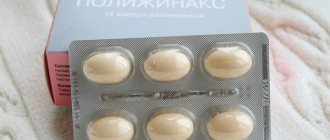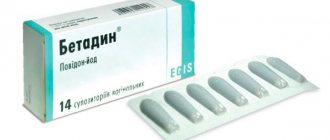A large number of representatives of the fairer sex suffer from thrush. They constantly have to deal with relapses of the disease. Those categories who have suffered from a fungal infection at least once periodically need prevention of thrush in women. In this case, suppositories are considered the most popular remedy, although the final decision regarding the most successful drug for preventing candidiasis should be made individually by the doctor.
Suppositories are used so often for preventive purposes due to the fact that they are an excellent local remedy that is very convenient for women to use. The method of exposure directly into a woman’s vagina implies a minimum impact on the body. You can get by with candles only in cases where your immune system is in good condition and your health is strong enough.
Women suffer from thrush more often than men, since the anatomy of the vagina and genital organs predisposes it to the growth of the fungus. In addition, candida (the causative agents of this annoying disease) grows better in conditions of variable acidity and hormonal imbalances, which is typical for the female body. Thrush worsens before menstruation, during pregnancy and menopause, as well as in cases where the immune system malfunctions.
Why is treatment necessary?
The consequences of candidiasis can be harmful to health and cause discomfort. Therefore, at the first signs of the disease, you should consult a doctor for advice. Thrush manifests itself in the form of itching, whitish discharge, and a specific odor. If this infection is not treated, you may experience complications such as:
- development of inflammatory processes in internal organs;
- decreased immunity;
- cervical erosion;
- fungal infection of the kidneys and urinary system;
- menstrual irregularities;
- in some cases, infertility.
With adequate therapy, candidiasis can be eliminated and relapses can be avoided, but on the condition that the patient complies with all treatment conditions and personal hygiene rules.
Clotrimazole is one of the drugs that helps effectively fight thrush. But it is not recommended to use it without a doctor's prescription.
The most popular suppositories for the prevention of thrush
You shouldn’t choose candles on your own; you need to start prevention with a visit to the doctor. It is he who can choose those candles that will be most effective for a woman. The range of such drugs today is very large, but in order for them to be effective, you need to have not only knowledge from commercials, but also medical skills. We will make an introductory review of the most popular suppositories for the prevention of thrush, which are most often recommended for women.
The following candles are considered the most popular:
- Pimafucin
One of the safest antifungal drugs that can be successfully taken even by pregnant women. The price is moderate with high quality and a fairly wide spectrum of action.
- Hexicon
This is also an excellent option for those who doubt the safety of sexual intercourse: suppositories should be used within two hours after the end, so that the woman can avoid not only thrush, but also other sexually transmitted diseases.
- Livarol
Effective not only for prevention, but also directly for treatment. Such suppositories can quickly relieve a woman of the symptoms of thrush (relief after the first use).
- Nystatin
A cheap remedy against thrush and for its prevention, which should not be used during pregnancy. Small doses of this drug will help to avoid the disease, since Nystatin in such quantities is able to restrain the protective potential of candida cell membranes. Large doses can completely get rid of thrush.
- Clotrimazole
It is used very widely, as it has a fairly wide spectrum of action. This active substance is the basis of the mass of antifungal drugs for women and men. Affects the synthesis process inside the fungal cell. Popular due to its low cost. The dose for the prevention of thrush is small, prescribed by a doctor individually.
- Polyzhanix
The manufacturer of these suppositories is France, so the medicine is developed to the best standards. It is rarely used for preventive purposes; it is mainly suitable for the treatment of thrush, and is also effective for the treatment of vaginitis of unknown origin.
- Fluconazole or Diflucan
Treatment and prevention with such drugs requires a combination with other medications. Prescribed in cases of active development of fungal flora in women and men.
- Bifidumbacteria
This is not an antifungal drug, but a means to restore microflora. Such suppositories help normalize the acidity level in the vagina. They are excellent for prevention and also restore local immune mechanisms.
Description of the drug
This antifungal drug is available in several forms:
- candles;
- tablets for vaginal use;
- cream;
- solution;
- ointment.
Ointment, cream and solution are prescribed for external use only. Clotrimazole belongs to the group of imidazole derivatives, odorless, white in color, used for damage to organs by yeast and yeast-like fungi, and also has an antibacterial effect. The mechanism of action is to disrupt the components of the cellular structure of fungi, as a result of which microbial cells are destroyed and die. The product is practically not absorbed through the mucous membrane of the skin.
It is prescribed not only for women, but also for men, as well as children. Most often, the drug is used in gynecology, obstetrics, dermatology, etc. Often this drug is prescribed along with other tablets aimed at the same pathogen.
Therapy with different forms of Clotrimazole
To achieve the best result, you must strictly follow the treatment regimen and act in accordance with the recommendations of your doctor. The active ingredient of the drug is very effective against thrush, but can be combined and used at any time of the day. Clotrimazole suppositories, tablets and another type of drug for external therapy. For example, insert vaginal tablets at night, and apply cream or ointment during the day to get rid of the burning sensation and relieve swelling.
All forms of Clotrimazole should be considered:
- Vaginal suppositories. This type of medication is used by women to treat thrush and in the complex therapy of trichomoniasis. Suppositories are good for prevention before surgery on the genitals. The method of application is simple - the suppositories are inserted into the vagina as deep as possible. It is better to carry out the procedure before going to bed at night. 1 vaginal tablet is used once, if its dosage is 500 mg.
- The course of treatment with smaller doses generally ranges from 3 to 10 days, but it all depends on individual factors, and the duration of therapy may vary at the discretion of the attending physician. If a relapse occurs at the end of the course, the treatment can be repeated. After the symptoms of candidiasis disappear, treatment should not be stopped for at least another week.
Vaginal tablets. This type of drug can replace suppositories. Before starting the procedure, Clotrimazole tablets for thrush are slightly soaked in water and then inserted into the vagina. This is necessary to activate the healing substance. It should be noted that this type does not cause side effects and is intended for local use. Used in the same way as candles, at night.
- Clotrimazole cream for thrush shows the same effectiveness as ointment, but is more practical in the sense that it does not leave greasy stains on linen. The instructions indicate how to apply the cream: you need to apply a thin layer of the medicine to the affected areas of the body. The procedure is repeated 2-3 times a day, a single dose is 5 cm strips of cream. Most often, Clotrimazole cream for thrush is prescribed to men as part of complex treatment; it is believed that in this case a 2% product of this type is suitable.
- Clotrimazole ointment for thrush can completely destroy pathogenic fungi. Apply 2 times a day, similar to cream. But you shouldn’t put on underwear right away; you need to let the ointment absorb for some time. The course of therapy is 3 weeks. It is necessary to refrain from intimacy during the period of treatment with the medicine. You should not use the ointment for thrush in the 1st trimester of pregnancy and during breastfeeding.
Solution. This form of the drug is relatively new to the pharmaceutical market and is therefore not often prescribed for the treatment of thrush. Available in liquid form, in small 15 ml bottles. But it is worth noting that the drug has already been able to prove its effectiveness. Directions for use: Apply 10–20 drops of solution to the affected skin and rub it in gently. The procedure is repeated 2 times a day.
Thus, the healing active substance has 5 release forms, which are not inferior in effectiveness to each other, but are used differently.
Clotrimazole
Mechanism of action
Clotrimazole inhibits the growth and division of microorganisms and, depending on the concentration, can have a fungistatic or fungicidal effect. The mechanism of action of clotrimazole is associated with a change in the permeability of cell membranes due to the effect on the synthesis of ergosterol and binding to phospholipids of the fungal cell wall. Clotrimazole inhibits the synthesis of proteins, fats, DNA, polysaccharides, damages nucleic acids in fungal cells and accelerates the excretion of potassium. It can also inhibit the activity of oxidative and peroxidant enzymes and the biosynthesis of triglycerides and phospholipids in fungal cells. At higher concentrations, clotrimazole causes damage to cell membranes by mechanisms independent of sterol synthesis. Clotrimazole prevents the transformation of Candida albicans
into invasive forms of mycelium. A change in the activity of the cell membrane leads to cell death, and this process depends on the contact of the drug with microbes.
Activity spectrum
Clotrimazole is characterized by a wide spectrum of antifungal and antibacterial activity. It is active against:
— dermatophytes ( Epidermophyton floccosum, Microsporum canis, Trichophyton mentagrophytes, Trichophyton rubrum
);
— yeast ( Candida sp., Cryptococcus neoformans
);
— dimorphic fungi ( Coccidioides immitis, Histoplasma capsulatum. Paracoccidioides brasiliensis
);
- protozoa ( Trichomonas vaginalis
).
Clotrimazole also exhibits activity against some gram-positive bacteria.
In vitro,
clotrimazole is characterized by a wide spectrum of fungistatic and fungicidal activity.
It affects the mycelium of dermatophytes ( Trichophyton, Microsporum, Epidermophyton
) similarly to griseofulvin, its effect on budding yeast-like fungi (
Candida
) is similar to the effect of polyenes (amphotericin B and nystatin).
At concentrations below 1 μg/ml, clotrimazole inhibits the development of most strains of Trichophyton rubrum, Trichophyton mentcigrophytes, Epidermophyton floccosum, Microsporum canis
.
At a concentration of 3 μg/ml, clotrimazole inhibits the development of most other microorganisms: Pityrosporum orbiculare, Aspergillus fumigatus
, the genus
Candida
, including
Candida albicans
, some strains of
Staphylococcus aureus, Streptococcus pyogenes
, as well as some strains of
Proteus vulgaris
and
Salmonella
.
Clotrimazole is active against fungi of the genera: Sporothrix
,
Cryptococcus, Cephalosporium, Fusarium
.
At concentrations above 100 µg/ml it is effective against Trichomonas vaginalis
.
Fungi resistant to clotrimazole are extremely rare; only a few resistant strains of Candida guilliermondii
.
The development of resistance in clotrimazole-sensitive fungi following passage of Candida albicans
and
Trichophyton mentagrophytes
. Cases of the development of resistance to clotrimazole in Candida albicans strains resistant to polyene antibiotics due to a chemical mutation have not been described.
Features of use, side effects, contraindications
Like any other medicine, Clotrimazole requires careful handling and taking into account some recommendations from specialists and manufacturers on how to use it correctly:
- It is prohibited to use all types of the drug orally;
- do not allow ointment, cream and solution to get into your eyes;
- should not be used together with latex contraceptives, as the latter may lose their strength.
This drug may have side effects:
- Clotrimazole ointment may cause a burning sensation;
- allergic reactions in the form of swelling and urticaria are possible;
- labored breathing;
- arterial hypotension;
- fainting;
- pain in the area of application and discomfort.
It should be noted that side effects are observed quite rarely, and generally the treatment takes place without negative manifestations. But if one of the listed symptoms occurs, you must stop using the drug and consult your doctor.
Contraindications:
- intolerance to the components of the treatment drug;
- 1st trimester of pregnancy, and for ointment during pregnancy and lactation;
- during menstruation.
Considering the above factors, independent use of Clotrimazole is not recommended.










